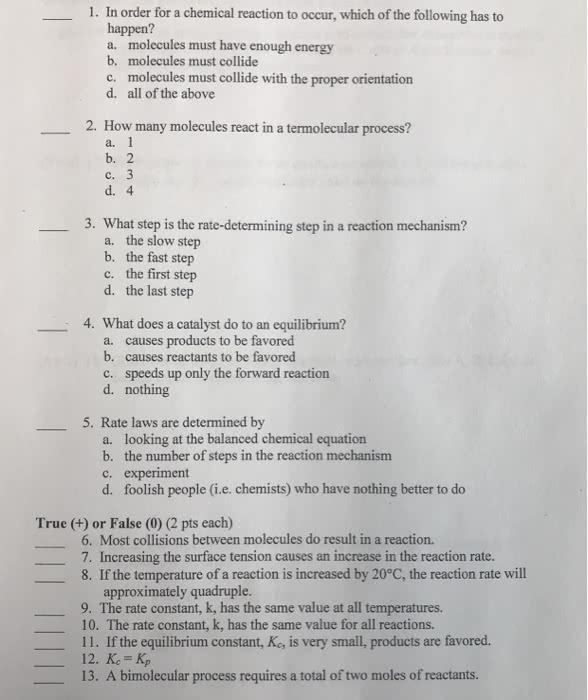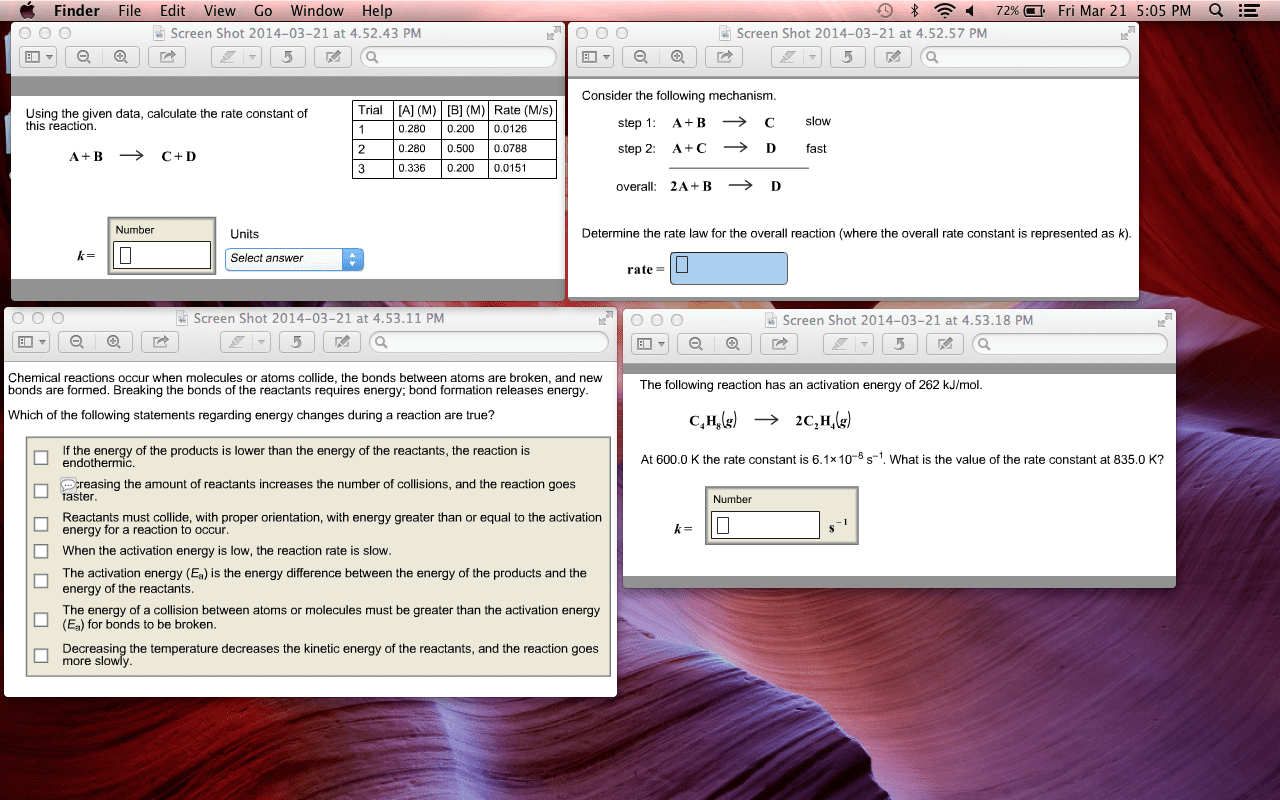CHEM 1032 Lecture Notes - Lecture 13: Nitric Oxide, Reaction Rate, Half-Life
Document Summary
Chemical kinetics: the study of the rates of reactions, the factors that affect these rates, and the sequences of molecular steps (reaction mechanisms). The more concentrated the reactants, the more frequently the particles will collide. The minimum kinetic (collision) energy that reacting molecules must have is called the activation energy, ea. The rate of reaction is the change in concentration of reactant or product per unit of time. Rate = [reactant]/ unit of time aa + bb cc + dd. Rate = - rate of disappearance of a/change in time. Rate = - rate of disappearance of b /change in time. Rate = + rate of appearance of c/ change in time. Rate = + rate of appearance of d/ change in time. Nitrogen monoxide reacts with bromine gas at elevated temperatures according to the equation, 2 no (g) + br2 (g) 2 nobr (g)



